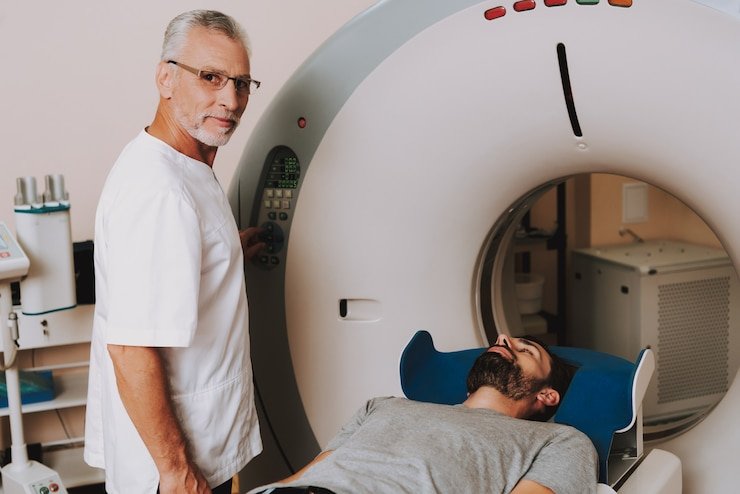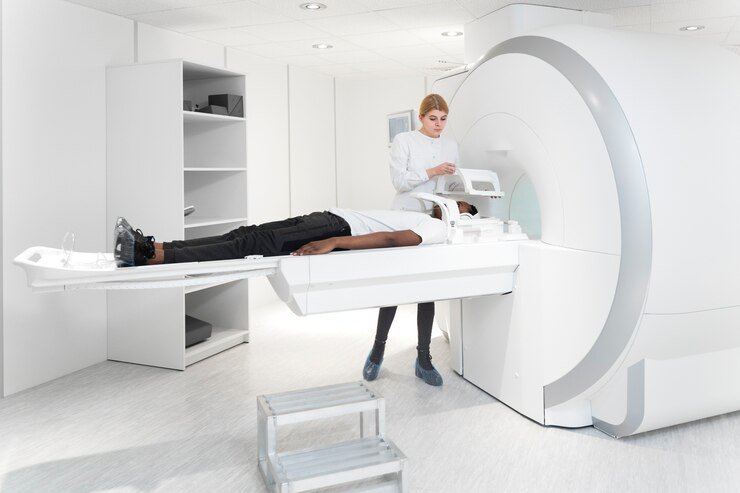Radiation Therapy: A Beacon of Hope in Cancer Treatment.
In the realm of cancer treatment, radiation therapy stands as a beacon of hope, offering patients a powerful weapon in the fight against cancer. This advanced medical technique utilizes high-energy beams to target and destroy cancer cells while minimizing damage to surrounding healthy tissue. In this article, we explore the role of radiation therapy as a cornerstone of modern cancer treatment, highlighting its efficacy, advancements, and impact on patient outcomes.
To Know More About It Please Click Here
Understanding Radiation Therapy
Radiation therapy, also known as radiotherapy, involves the use of ionizing radiation to kill cancer cells and shrink tumors. It can be delivered externally using a machine called a linear accelerator or internally through the placement of radioactive sources directly within the body. Radiation therapy may be used as a primary treatment modality, in combination with surgery or chemotherapy, or as palliative care to alleviate symptoms and improve quality of life.
Targeted Cancer Treatment
One of the key advantages of radiation therapy is its ability to target cancer cells while sparing adjacent healthy tissue precisely. Advanced imaging techniques such as CT scans and MRIs allow oncologists to precisely map the tumor and surrounding anatomy, ensuring accurate delivery of radiation beams to the intended target. This targeted approach minimizes the risk of side effects and maximizes the therapeutic effect on cancer cells.
Types of Radiation Therapy
Radiation therapy can be delivered in different forms depending on the type, location, and stage of cancer. External beam radiation therapy (EBRT) involves directing radiation beams from outside the body toward the tumor site, while internal radiation therapy (brachytherapy) involves placing radioactive sources directly into or near the tumor. Stereotactic body radiation therapy (SBRT) delivers high doses of radiation with extreme precision and is often used for small, localized tumors.
Advancements in Radiation Therapy
Advancements in radiation therapy technology have revolutionized cancer treatment and improved patient outcomes. Techniques such as intensity-modulated radiation therapy (IMRT), image-guided radiation therapy (IGRT), and proton therapy allow for more precise targeting of tumors while sparing surrounding healthy tissue. Additionally, advances in radiation oncology software and treatment planning algorithms have enhanced treatment accuracy and efficiency.
Managing Side Effects
While radiation therapy is highly effective in treating cancer, it can also cause side effects depending on the dose, duration, and area of treatment. Common side effects may include fatigue, skin irritation, nausea, and changes in bowel or bladder function. However, advancements in supportive care techniques, such as nutritional counseling, pain management, and skin care, help minimize side effects and improve patient comfort during treatment.
To Know More About It Please Click Here
Conclusion
Radiation therapy has emerged as a cornerstone of modern cancer treatment, offering patients a beacon of hope in their journey toward recovery. Through targeted cancer treatment, advancements in technology, and comprehensive supportive care, radiation therapy continues to improve outcomes and quality of life for cancer patients worldwide. As research and technology continue to evolve, the promise of radiation therapy as a potent tool in the fight against cancer remains steadfast, providing hope and healing to patients and their loved ones.








